In this International Year of Astronomy, it is said orbital telescopes and with new cameras will let us look so far into space we may see the origins of the universe. We can see the past now.
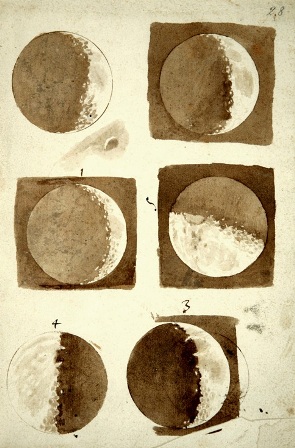
These are Galileo's watercolor renderings of earth's moon as he saw it in 1610.
Naturally, I have a little trouble with this concept. No matter how hard I look, I have never been able to see past my memory, and sometimes even that does not serve as well as it might. It’s an intriguing notion, though.
How I would like a window looking onto the past of our farm.
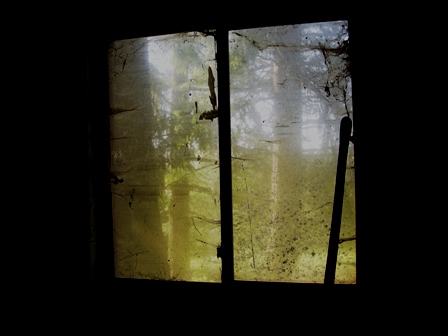
The other day, the tax assessor came by. We are making a bit of a ruckus here, what with ripping the landscape apart and building a house. So we have the attention of the bureaucracy which, it turns out, is not always up-to-date on improvements.
The assessor had a sheaf of papers in hand showing what our farm ought to look like. For instance, he noted there was no demolition permit in the file for the barn. The barn? We look down the slope to our pole barn, which is standing and serving. Oh, the barn. You mean, perhaps, that rotting deck out there that supports beehives? That was once a barn. It wasn’t anymore when we came here. Even the pile of boards from its collapse had been cleared away, gone, perhaps, into someone’s upscale restaurant interior. Barn wood is much in demand for interiors.
He looked around some more and pointed out that, in 1937, there was a house in what is now our pasture. We shrug. What else can you do? There is no house there now, and hasn’t been in recent times. 1937: Was that the last date an assessor came out? There is no humor in this man. He wants to know, what’s that shed down there?
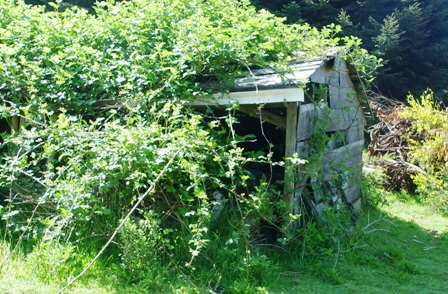
They give the impression of a desperate quest for tax dollars around here. That loafing shed, in what might once have been the fore-yard of the old, gone barn, may have come from the 1930s. It’s been patched with later plywood on one end, and has a plastic gutter hanging off the front, and it teeters toward the promise of a collapse someday soon. It was teetering when we came here, propped up with plumbing pipe where its roof drooped toward the dirt floor. “Take a look at it,” we say, confident this shed will not add greatly to the value of our holdings.
But it puts a person in a wondering mind, to focus on 1937 for a moment. Who were they, and what they were doing, back then? We find traces, here and there, of those other folk. Walk in our pasture any day and you will find evidence coming up with the grass.
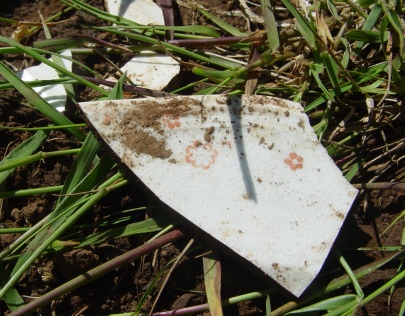
Why china and glass emerge from our pasture is open to speculation. Were they like Maggie and Jiggs, hurling dinnerware? Were they such slobs they tossed it out the window when it chipped or broke, or needed doing up? Or is the present pasture the site of an old dump still living somewhere underground?
Stuff gets left around on a farm, and vanishes for a time, and emerges again later on. I pick the small bits up and put them in jars. The archeologist in me (I was one once, and once thought I might be one, more) is less interested in the things they had than in what the people did with them. Some are obvious…
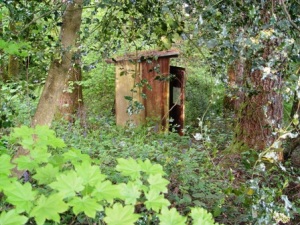
Some are mysterious…
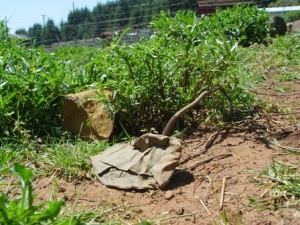
Some are small things:
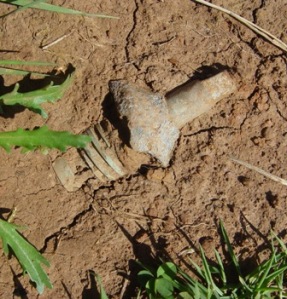
Some are large:
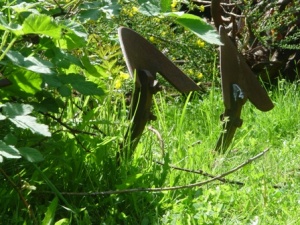
They give us clues to who those people were, but they don’t put faces on them.
Let me think: 1937.
Franklin D. Roosevelt began his second term as President. The first issue of Detective Comics hit the stands (Batman was still a little way down the road). In May the Hindenburg exploded. By July of 1937, Japan and China were at war in events that are now thought to have been the first acts of WWII in Asia. Amelia Earhart disappeared in July. Ernest Hemingway, George Orwell and Martha Gellhorn were covering the Spanish Civil War. In December, Walt Disney‘s Snow White and the Seven Dwarfs, the first feature-length animated movie, opened at theaters in the United States.
And down on the farm? The Great Depression was still underway. I wonder if those people on our farm, had the money for tickets to Snow White and the Seven Dwarfs. I wonder, even, how they might have gotten to town to see it. Some folks had cars, certainly. But this little farm could not have given back much. In 1937, horse power was still common for transportation in rural areas. It was a long way to town, a whole day or more to go and come back.
Maybe they had a radio; and I imagine them gathered around it in the evening, tired from a day of hard work, listening, perhaps, to Bing Crosby sing The Moon Got in My Eyes.
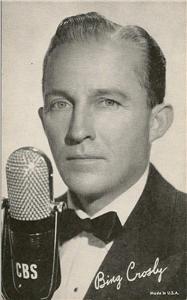
Bing Crosby in the 1930s
What was the farm wife wearing in 1937? Maybe this, the pattern available for a hard-won 15¢ from Simplicity:
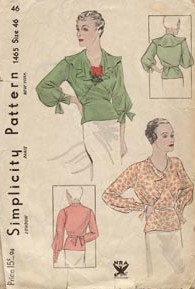
Just because she lived on a farm, it doesn’t mean she didn’t want to look pretty. There was church to go to, and The Grange, and the County Fair in August. Maybe she took her preserves, or her knitting, as exhibits (I still dream of the day I complete a pair of socks with no errors, suitable for entry in the Fair!). Or maybe it was her best rooster.
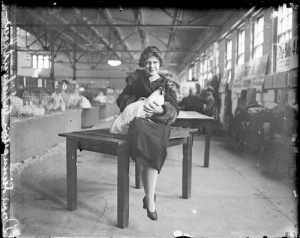
This photo of Miss Dorrie Livingston with her prize-winner is from the Chicago History Museum. Its Library of Congress Digital ID number is n082119.
You can be sure there was a flock of chickens on the place. It’s hard to imagine a country household in the Depression without chickens muttering around the yard.
Maybe they kept some bees, like I do.
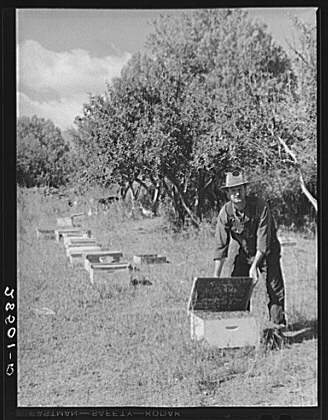
Find this image of a beekeeper in the Library of Congress Prints and Photographs Division.
Or it might be they raised pigs…
Nothing much about raising animals will have changed since 1937:
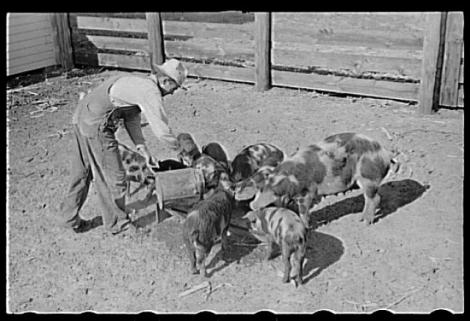
This photo of a farmer feeding his pigs is in the the Library of Congress, Farm Security Administration collection.
Because of the photo record we have, we forget the 1930s did take place in color.
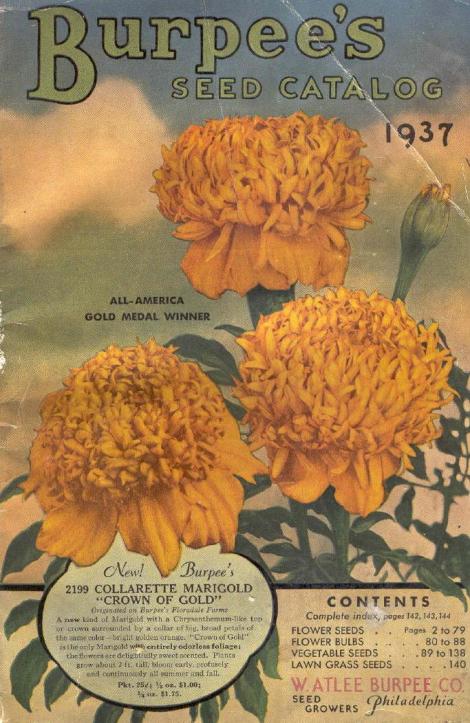
In fact, it might be that not much has changed at all on a small farm. The weather is still unpredicatable, the return from your efforts is still uncertain, the rains fall, the garden grows, and the sun is hot in summer. Folks at the end of the day sit out in the evening this time of year, and look across the hills at the trees putting out their new set of growing ends. At the pace a tree grows, our little buzzing around from one year to another must seem trivial.
To the hog in the pen, what’s the difference from one decade to another? He’s here today. Maybe not next year. Some seasons are fat, some are slim.
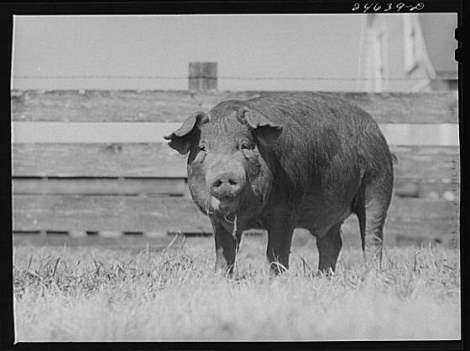
Lib. of Congress, Prints and Photographs Division
Change? What are you people talking about?